Related Research Articles

Wolfgang Gröbner was an Austrian mathematician. His name is best known for the Gröbner basis, used for computations in algebraic geometry. However, the theory of Gröbner bases for polynomial rings was developed by his student Bruno Buchberger in 1965, who named them for Gröbner. Gröbner is also known for the Alekseev-Gröbner formula, which was actually proven by him.

Sir Alan Roy Fersht is a British chemist at the MRC Laboratory of Molecular Biology, Cambridge, and an Emeritus Professor in the Department of Chemistry at the University of Cambridge. He was Master of Gonville and Caius College, Cambridge from 2012 to 2018. He works on protein folding, and is sometimes described as a founder of protein engineering.
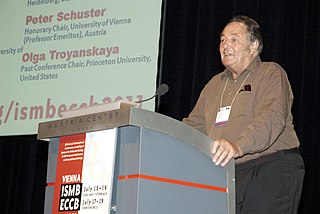
Peter K. Schuster is a theoretical chemist known for his work with the German Nobel Laureate Manfred Eigen in developing the quasispecies model. His work has made great strides in the understanding of viruses and their replication, as well as theoretical mechanisms in the origin of life.
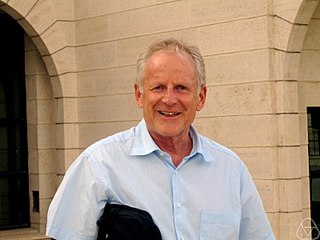
Bruno Buchberger is Professor of Computer Mathematics at Johannes Kepler University in Linz, Austria. In his 1965 Ph.D. thesis, he created the theory of Gröbner bases, and has developed this theory throughout his career. He named these objects after his advisor Wolfgang Gröbner. Since 1995, he has been active in the Theorema project at the University of Linz.
Reimar Lüst was a German astrophysicist. He worked in European space science from its beginning, as the scientific director of the European Space Research Organisation (ESRO) from 1962 and as Director General of the European Space Agency (ESA) from 1984 until 1990.

Charles Weissmann is a Hungarian-Swiss molecular biologist. Weissmann is particularly known for the first cloning and expression of interferon and his contributions to the unraveling of the molecular genetics of neurogenerative prion diseases such as scrapie, Creutzfeldt–Jakob disease and "mad cow disease".
Hans List was a technical scientist and inventor and entrepreneur.

Edmund Hlawka was an Austrian mathematician. He was a leading number theorist. Hlawka did most of his work at the Vienna University of Technology. He was also a visiting professor at Princeton University and the Sorbonne. Hlawka died on 19 February 2009 in Vienna.
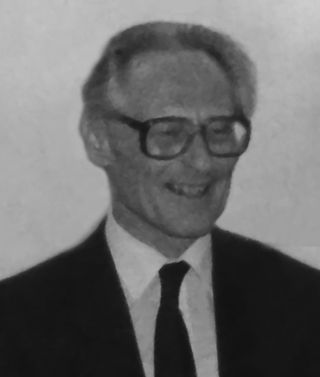
Hans Tuppy is an Austrian biochemist who participated in the sequencing of insulin, and became Austria's first university professor for biochemistry. He was Austrian Minister for Science and Research from 1987 to 1989.
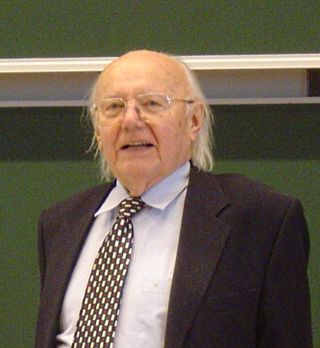
Heinz Zemanek was an Austrian computer pioneer who led the development, from 1954 to 1958, of one of the first complete transistorised computers on the European continent. The computer was nicknamed Mailüfterl — Viennese for "May breeze" — in reference to Whirlwind, a computer developed at MIT between 1945 and 1951.
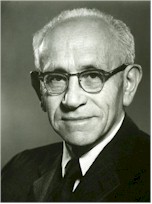
Philip Sporn was an Austrian electrical engineer known for his work as the president and chief executive officer of the American Gas and Electric Company. He received the IEEE Edison Medal for "contributions to the art of economical and dependable power generation and transmission".

Günther Wilke was a German chemist who was influential in organometallic chemistry. He was the director of the Max Planck Institute for Coal Research from 1967–1992, succeeding Karl Ziegler in that post. During Wilke's era, the MPI made several discoveries and achieved some financial independence from patents and a gift from the Ziegler family. The institute continued as a center of excellence in organometallic chemistry.

Michael Grätzel is a professor at the École Polytechnique Fédérale de Lausanne where he directs the Laboratory of Photonics and Interfaces. He pioneered research on energy and electron transfer reactions in mesoscopic-materials and their optoelectronic applications. He co-invented with Brian O'Regan the Grätzel cell in 1988.
Helmut Zahn was a German chemist who is often credited as the first to synthesize Insulin in 1963. His results synthesizing insulin were achieved almost simultaneously with that of Panayotis Katsoyannis at the University of Pittsburgh. His work was not honoured by the Nobel prize because in 1958 Frederick Sanger was the first who discovered the chemical structure of Insulin.
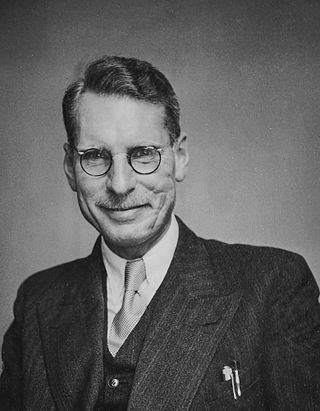
Ladislaus von Rabcewicz was an Austrian engineer and university professor at the Vienna University of Technology. He is notable for being one of three men who developed the New Austrian Tunneling method.
Hans Scherenberg was a German automobile engineer and executive.
Karl Kordesch was an Austrian chemist and inventor, most notable for jointly inventing the alkaline battery. In 1953 he moved to the United States as part of Operation Paperclip.
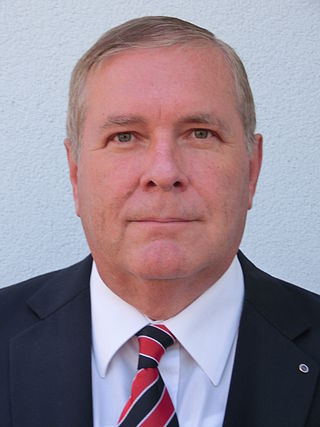
Siegfried Selberherr is an Austrian scientist in the field of microelectronics. He is a professor at the Institute for Microelectronics of the Technische Universität Wien . His primary research interest is in modeling and simulation of physical phenomena in the field of microelectronics.
Otto Kratky was an Austrian physicist. He is best known for his contribution to the small-angle X-ray scattering method, for the Kratky plot, and for the invention of the density metering using the oscillating u-tube principle. The worm-like chain model in polymer physics, introduced with Günther Porod in a 1949 paper, is also named the Kratky–Porod model.
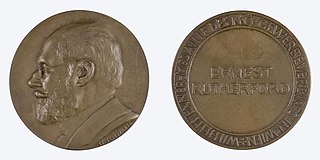
The Wilhelm Exner Medal has been awarded by the Austrian Industry Association, Österreichischer Gewerbeverein (ÖGV), for excellence in research and science since 1921.
References
- 1 2 "Overview of Seminar by Dr. Hermann Kopetz: Component-Based Design of Embedded Systems". University of California, Irvine. Archived from the original on December 12, 2012. Retrieved February 21, 2012.
- ↑ "IEEE Fellows Directory". Institute of Electrical and Electronics Engineers. Archived from the original on June 29, 2011. Retrieved February 21, 2012.
- ↑ Editor, ÖGV. (2015). Wilhelm Exner Medal. Austrian Trade Association. ÖGV. Austria.